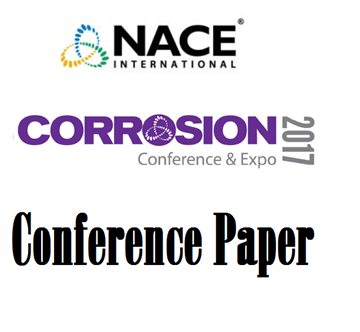Internal pitting corrosion and metal wall loss has been observed in crude oil pipelines despite having < 0.5 % basic sediment and water content (BS&W) at locations where sediments tend to accumulate. These sediments termed “sludges” are composed of varying combinations of hydrocarbons sand clays corrosion by-products biomass and water. Sludges are known to accumulate and concentrate water from the oil and facilitate a metal/water interface enabling localized under-deposit corrosion (UDC). In addition sludges can support the formation of bacterial colonies creating conditions that are conducive for Microbiologically Influenced Corrosion (MIC) manifested as pitting.Previous studies have been conducted that were focused on development of laboratory and pilot scale facilities for the evaluation of sludge corrosivity in crude oil pipelines. These studies produced under deposit corrosion rates that were deemed negligible (< 20 m/yr) despite the high water content (20 % weight) and high bacteria content of the field collected sludges. This work presents the progress made in developing a protocol for accelerated MIC in under deposits for crude oil transmission pipelines. The current methodology incorporates nutrient-rich broths for the cultivation of naturally occurring bacteria obtained from sludge samples and the formation of an active biofilm on the surface of metal specimens (e.g. carbon steel weight loss coupons and four inch pipe). The biofilm is then overlain with sludge exposed to oil and an under deposit environment is formed. Using this approach corrosion rates in excess of 1.5 mm/yr have been duplicated; more importantly pitting has been observed with the appearance of 90 m pits over a three week period in the most severe case.The same approach for generating a corrosive environment in which bacteria is present at the metal surface will be adapted to pipe segments. The preconditioned piping will then be placed in a pilot scale hydrocarbon flow-loop and used to evaluate the effectiveness of biocides and corrosion inhibitor applications via online corrosion monitoring techniques and corrosion coupons.




